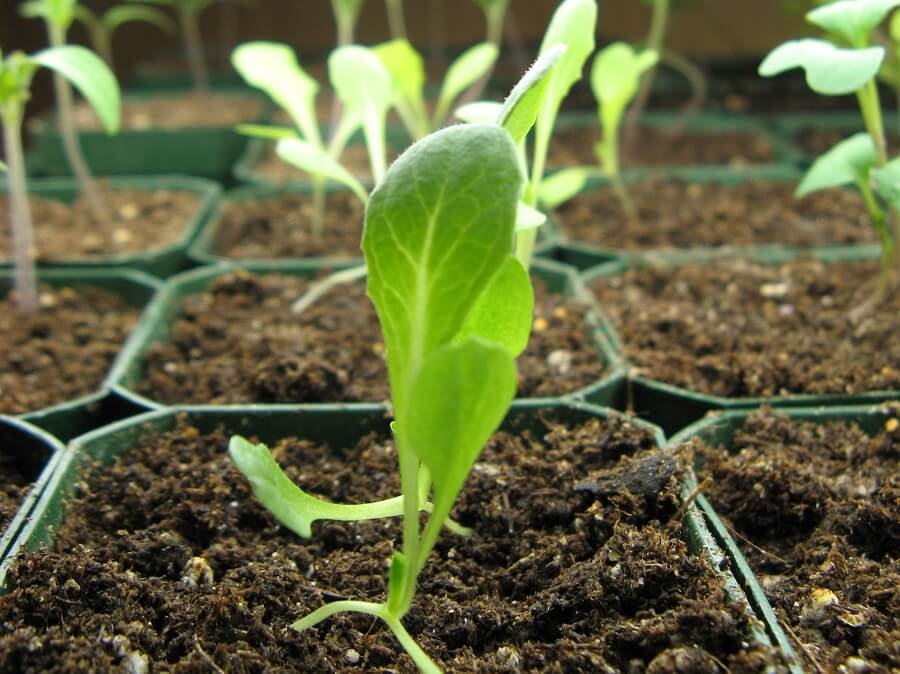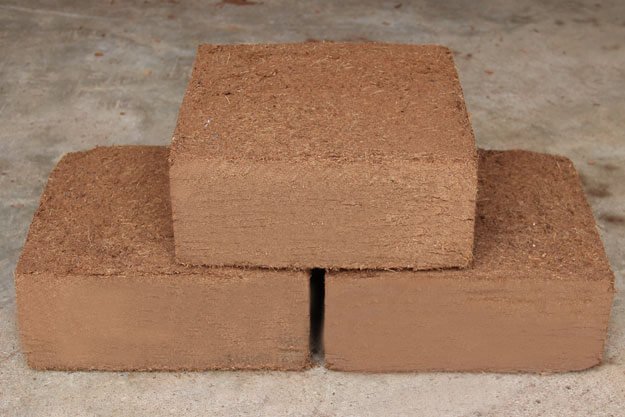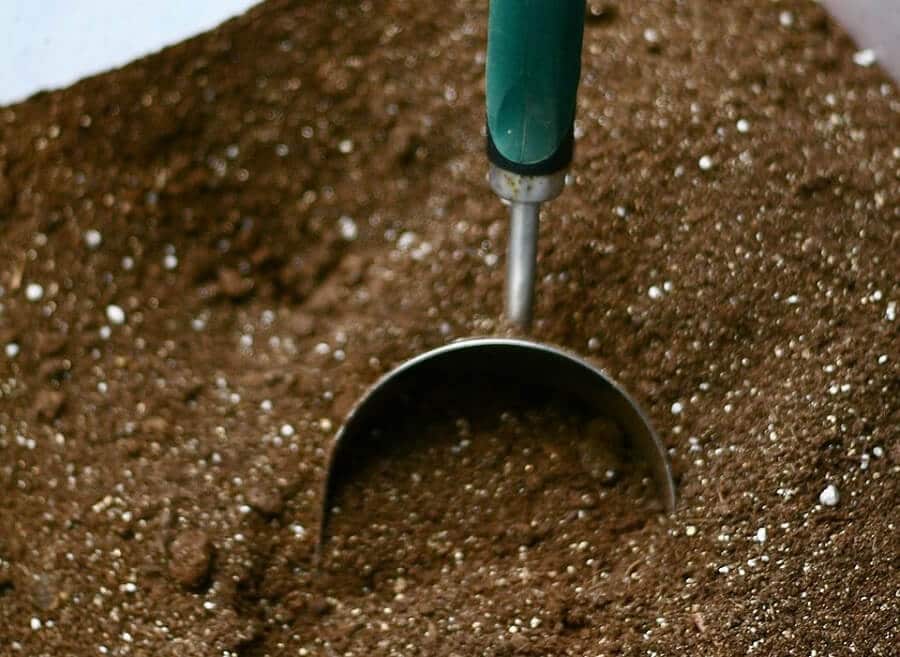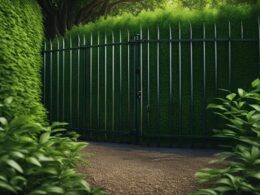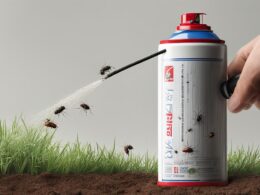One of the craftiest things you can do in the garden is start seeds and watch them develop. In order to do that, you need a really great seed starting mix. Sure, you can just buy one pre-made, but wouldn’t it be more fun if you could make one by yourself? Not to mention it is cheaper and healthier for the plants. There are plenty of seed starting mix recipes out there, and we’re going to provide you with 10 of the best options today. Let’s have a look!
10 Seed Starting Mix Recipes to Make by Yourself
What Are the Ingredients You’re Going to Need?
1. Perlite
This is a volcanic mineral that helps with drainage. The reason why it does that is that it doesn’t absorb nutrients or water. Also, it manages to successfully insulate the plants, which means their roots won’t get damaged by temperature fluctuations. For an organic seed starting mix, we recommend the Espoma Organic Perlite you can find here.
2. Vermiculite
This is an alternative to perlite, and also an ingredient which complements it. The difference between perlite and vermiculite is that the latter retains nutrients and water, and then it releases them when the plant needs it. It’s also quite light, and it improves drainage. The Espoma Organic Vermiculite that you can order here is perfect for seed mixes.
If you can’t get your hands on – or don’t want to use – perlite or vermiculite, there’s another option which is sand. All soils contain some sand as well. This ingredient makes the soil structure more stable and also improves drainage, but it doesn’t have any nutrients.
3. Peat Moss
This ingredient helps you save water, since it improves aeration. It doesn’t contain that many nutrients, and it’s also acidic, which means you’ll have to add some lime to it in order to balance the pH. You can try the Espoma Organic Peat Moss that you can purchase right here.
Please keep in mind that peat moss takes out of the earth’s mires. The good news is that there are alternatives to peat moss which are environment-friendlier.
4. Coco Peat
One of the best alternatives for peat moss is coco peat, which is made of coconut fibers. Coco peat comes in blocks which are lightweight and which swell when you add water to them. It’s not acidic, but neutral, and it contains potassium and macro-nutrients. Here‘s where you can find some high-quality coco peat.
A couple of more alternatives would be composted wood fiber, leaf mold, cat litter, or pine bark hummus. Just remember that cat litter only works for plants that don’t need a lot of nutrients, such as succulents. Wood fiber also doesn’t contain a lot of nutrients, but pine bark hummus is actually a stable and water permeable ingredient, which makes it a good alternative.
5. Compost
The last ingredient you’re going to need is compost. You won’t need it for all the recipes we’ve prepared for you today, but some of them don’t work without it. We recommend using fine compost as much as possible. A great compost alternative is manure. You can also find mixes that contain both compost and manure, such as the Michigan Peat Garden Magic Compost and Manure that you can buy here.
What Do You Have to Consider Before Getting Started?
Before providing you with the seed starting mix recipes we’ve prepared today, we wanted to mention a couple of things you should consider beforehand. For instance, the recipes differ according to the plants you want to grow which means the first step is deciding what plants you’re willing to take care of.
There are three types of seeds out there, some that require high energy, some which need average energy, and some which grow perfectly fine with low energy. A couple of high requirement seeds are tomatoes, potatoes, sunflower, cabbage, or geraniums. Among average requirement seeds, there are cucumbers, pumpkin, dahlias, gloxinias, or snapdragons. Finally, some low requirement seeds are lettuce, petunias, herbs, azaleas, pansies, or begonias.
If you need some help deciding on the best plants to grow, consider whether you want to be able to eat what you’ve grown, or simply use the plants as decorations and follow their development.
Recipe #1
The first seed starting mix recipe we want to provide you with is one of the most basic ones, which means you can use it for a large variety of plants. You only need 1/2 part of vermiculite, perlite, or sand, and 1/2 part of coco peat or peat moss. As you can see, in the case of this first recipe, you don’t need to add compost.
Recipe #2
The second seed starting mix recipe is also quite basic, the difference being that this one is more suitable for plants that require a lot of energy to grow. You’ll have to mix 1/3 part of perlite, vermiculite, or sand, with 1/3 part of peat moss or coco peat, and 1/3 part of compost.
Recipe #3
This recipe is for low requirement seeds, and it contains 50% peat moss or coco peat, 45% perlite or vermiculite, and 5% bark hummus.
Recipe #4
This next recipe is suitable for average requirement plants. All you have to do is mix 55% coco peat, peat moss, or wood fiber with 15% sand, 20% compost, and 10% bark hummus, and you’ve got yourself a great seed starting mix.
Recipe #5
A high requirement seed starting mix, this one contains 40% coco peat or peat moss, 30% garden soil, bark hummus, and sand, and 30% compost.
Recipe #6
This seed starting mix recipe contains more ingredients than the previous ones, but it’s definitely worth the extra effort. What you have to gather is 1 cubic foot of peat moss, 1/8 quart bag of vermiculite, 1/8 quart bag of perlite, half of a large bag of potting soil, and 1 5-gallon bucket containing manure or aged compost.
Recipe #7
Yet another seed starting mix that is going to provide your plants with all the nutrients they need, this one is also easy to make. All you need is 4 parts screened compost, 1 part vermiculite, 1 part perlite, and 2 parts sphagnum peat moss. If you don’t have any compost that you can use for this recipe, you can replace it with lime. Add a quarter teaspoon for every gallon of seed starting mix you make.
Recipe #8
This recipe is perfect for plants that need an extra nutrient boost. It contains 2 parts peat moss, 1 part vermiculite, 1/2 part of perlite, and 4 parts of compost. What you must keep in mind when adding the compost is that it should be fine. If it’s not, you’ll be wasting more time sifting out the pieces which are too large for you to use.
Recipe #9
The next recipe we want to provide you with today doesn’t contain any compost. This means it’s easier for you to make. It only contains 3 parts peat moss, 1 part vermiculite, 1/2 part of perlite, and 1/4 teaspoon of gallon peat moss or lime.
Recipe #10
This last seed starting mix recipe contains the following ingredients: 1 brick of coco peat, one gallon of organic compost (this recipe doesn’t work with manure instead of compost), one gallon of vermiculite, and one gallon of perlite.
How to Adjust the Quantities
The thing about seed starting mixes is that they can (and should) be adjusted according to the needs of your plants. Keeping that in mind, the recipes above should serve as guidelines, but shouldn’t be regarded as rules that you must follow. Feel free to adjust the quantities of the ingredients you use as you see fit.
For instance, whenever you make your own seed starting mix, you have to keep in mind the fact that you need a balance between a mix that drains well and one that’s able to preserve moisture. That’s because if your plants are surrounded by too much moisture, they’re going to catch fungal diseases. This will lead to them withering and eventually dying. A soil that drains well usually contains more perlite or peat moss and less compost. If what you’re looking for is soil that preserves more water, then you should use more vermiculite or compost.
How to Mix Everything Together
Maybe you’re wondering, once you’ve gathered all the ingredients, how are you going to mix them together? Well, this is actually the easiest part of making your own seed starting mix. All you need to do is get a large container, place all of the ingredients there, and then take a hose and start wetting them down. With a rake, stir everything until the ingredients are mixed properly. The key is to make a mix that’s extremely lightweight since the seedlings need proper drainage.
Summing It All Up
Making your own seed starting mix is something you should be extremely proud of. While there’s nothing wrong with buying a mix, you’ll feel much better knowing that you know exactly what the mix you’ve used contains and how it was made. Not to mention that fact that if you’re a person who likes spending a lot of time in the garden, this activity will allow you to do just that. You’ll get to be crafty and provide your plants with the best seed starting mix in the process.





